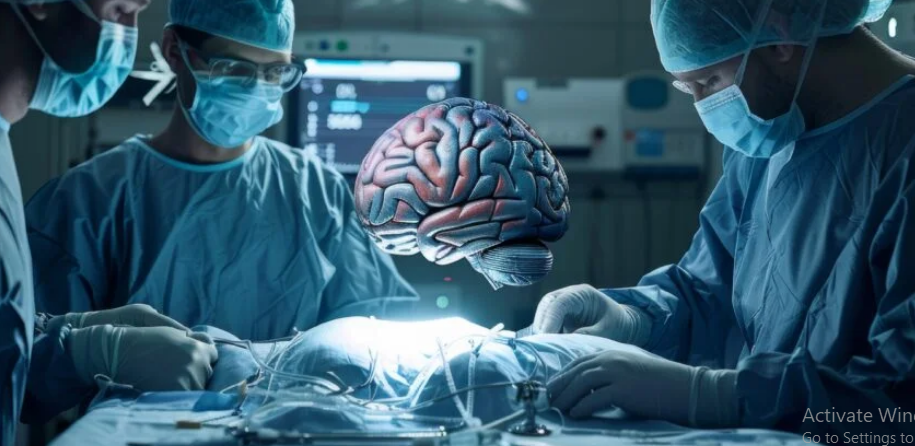Neurosurgery Reinvented: A Glimpse into Latest Innovations and Techniques in the Field
Neurosurgery is one of the rapidly changing fields of surgery and offers new hope to patients suffering from distressing brain conditions. Recent innovations in neuroimaging and surgical techniques are bound to alter the diagnosis and treatment of disorders by neurosurgeons. Besides improving precision during surgery, these advances have raised the overall quality of care given to the patients.
With this form of surgery, surgeons will have some of the latest tools that will enable them to conduct minimal invasive procedures. It means reduced recovery time and less risk for patients. Due to the rapid advance in technology, the field should also be updated concerning new techniques to produce better results.
The future of neurosurgery looks brilliant due to the surfacing of more and more innovations. Knowledge of these techniques can provide insight into how they are changing patient care and what to expect after diagnosis and within a treatment plan.
Key Takeaways
- Newer advancements in brain imaging are more accurate.
- New surgical techniques reduce recovery times for patients.
- Emerging innovations are the way to the future in the field of neurosurgery.
Advances in Neuroimaging
Neuroimaging has been much improved in recent years to enhance surgical accuracy for better patient outcome. Newer techniques allow much better delineation of brain structures, hence improving the planning and execution of neurosurgeries.
High-Definition Fiber Tractography
HDFT represents an advanced imaging technology. Diffusion MRI is exploited by HDFT to create highly detailed maps of brain connections.
This technology allows surgeons to see white matter tracts better. Knowledge of how various parts of the brain are connected will enable surgeons to avoid damaging important pathways when operating.
HDFT can be applied in designing strategies for complicated surgeries, such as those for tumor or epilepsy patients. The preoperative mapping of brain anatomy will enhance the chances of success of the doctor’s strategy and reduce risks to the patient.
Functional MRI in Surgical Planning
Another important tool for neurosurgery is functional MRI. This device detects changes in blood flow, showing the activity of the brain.
It is used by surgeons to locate the areas of the brain responsible for vital functions such as movement and speech. The knowledge of the place of these areas will definitely enable them to devise safer surgical approaches.
fMRI is utilized in pre-surgical evaluations, providing improved data regarding the functioning of the patient’s brain. This is useful in surgeries that are conducted in proximity to the functional areas of the brain, thereby serving to minimize postoperative deficit risks.
Intraoperative MRI Technologies
New intraoperative MRI technologies are reshaping the surgery landscape. Such systems are allowed to perform true imaging during the course of surgery performance in a timely fashion.
With iMRI, surgeons are allowed to review their progress during the surgery and immediately make informed decisions with live images of the brain. It is very helpful during brain tumor removal.
iMRI ensures that surgeons will view changes taking place during surgery. This helps them verify that the tumor has been removed or if there is still anything that needs attention. It minimizes complications and leads to better patient results.
New Surgical Techniques
Neurosurgery is among the most dynamic surgical specialties. It remains committed to its quest with a development of new techniques continuously for better results of salvage and safety. A number of more recent progressions in neurosurgery involve efficient strategies that minimize recovery times and surgical complications.
Laser Interstitial Thermal Therapy
Laser Interstitial Thermal Therapy, commonly referred to as LITT, refers to the application of focused laser light with the objective of obliterating tissue abnormality inside the brain. The treatment is generally used for tumors and epilepsy.
In the procedure, a thin laser fiber is introduced into the brain via a small incision. The method allows doctors to selectively heat and vaporize unwanted tissue without extensive damage to other tissues.
LITT offers advantages of much shorter hospital stays and less pain compared to traditional surgeries. Recovery usually is quicker because this is a very minimally invasive procedure.
Robot-Assisted Surgery
Robot-Assisted Surgery integrates state-of-the-art robotic systems with specialized knowledge from surgeons for greater precision. This technology allows for smaller cuts and better visualization of the operated parts.
The surgeons, while seated at the console, move the robotic instruments. This gives them finer manipulative capability than in a regular surgical procedure. The patient also benefits from this, as there will be less blood loss and thus a faster recovery.
Robot-assisted techniques are usually performed for complicated surgeries like tumor removal or spinal surgery. This allows surgeons to make fine movements, which are difficult to perform manually.
Endoscopic Skull Base Surgery
This is a less-invasive procedure that involves the access of the skull base through the nasal route. This would be the most appropriate route for removing tumors located at the base of the skull.
The ability to use an endoscope enables high-definition images of the area in which surgery is going to be performed, thus contributing to higher accuracy. Complications, when they do occur, are very minimal as compared to open surgery, though there is less postsurgical discomfort and shorter healing times.
Because of the small size of the incision, there is less blood loss by the patients and postoperative pain. This technique serves as a useful approach in both benign and malignant grinning tumors.
Responsive Neurostimulation
Responsive Neurostimulation, or RNS for short, is a revolutionary technology in the treatment of epilepsy. It involves implanting a device that continuously monitors the activities of the brain and gives electrical stimulation upon the detection of abnormal activity.
By this proactive approach, seizures can be prevented even before they take place. Patients with RNS find relief where traditional treatments have failed them.
The RNS device is implanted beneath the skull, is MRI-compatible, and therefore easily allows for continued monitoring without the need for its removal. Patients experience a strong decrease in seizure frequencies, improving their quality of life.

Also Read :
